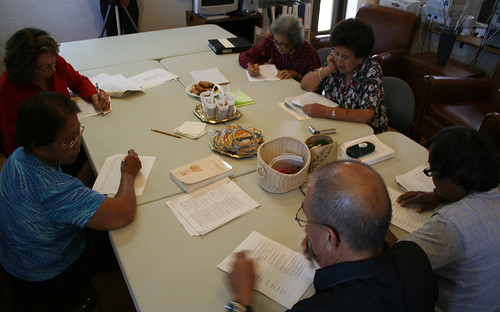With the enactment of PL 33-236 re-establishing I Kumisión i Fino’ CHamoru yan i Fina’nå’guen i Historia yan i Lina’la’ i Tåotao Tåno’ (Kumisión) came the responsibility to refine a standard way of linking the atfabeton CHamoru to the sounds of our indigenous language. We adopted some changes to the 1983 CHamoru orthography and hereby present this booklet so that we may embark on the Kumisión’s vision and planned goals and objectives.
An orthography is simply the establishment of the norms of spelling, emphasis, capitalization, punctuation, pre- and infixes, and other rules for writing language. We also know that there are always more sounds than letters and that no alphabet fits its language exactly. We can see this in the dialectal differences of spoken CHamoru. While spoken language varies from place to place and from time to time, written language will always be less flexible than its spoken parent. Written language has a different function and is produced mechanically. It must serve everyone who speaks the language, and it does this by keeping the spelling similar from one time to another. By this adopted Orthography, the Kumisión members made great efforts to provide a more standardized approach to writing CHamoru. The Kumisión acknowledges dialectical, generational, island specific and personal preferences.
In careful consideration of our movement forward, we agreed that our own orthographic rules and use of the Atfabeton CHamoru must also conform to the broader norms of language systems in society, e.g. the adherence to the rule on endonyms. Other considerations of language that must be explored in the standardization and the advancement of CHamoru includes, for example, studying the desired relationship that CHamoru, a non-English language, will have with English.
Agreeing on a shared way to use our Atfabeton CHamoru in writing is necessary in building proficiency and therefore, building stability into CHamoru as the mother tongue of our people of the Mariana Islands. The consistency that we sought was to be able to represent all and only the distinctive sound contrasts with the fewest possible symbols and conventions including an attempt at preserving historical information, highlighting cultural affiliations and supporting dialectal or regional variation. This booklet provides guidance in order that we do just that – communicate in a more standard way in CHamoru. We hope that you will cherish this booklet and employ the rules consistently and frequently.
Editor’s note: “Utugrafihan CHamoru, Guåhan (Guam CHamoru Orthography)” is adapted and e-published with permission from the Kumisión i Fino’ CHamoru yan i Fina’nå’guen i Historia yan i Lina’la’ i Tåotao Tåno’ (Commission on CHamoru Language and the Teaching of the History & Culture of the Indigenous People of Guam).
By Hope A. Cristobal
View e-publication in Issuu here.



